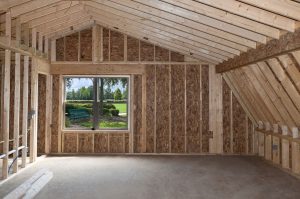Skip to content
Launching a Home Rebuild
 If wildfire victims decide to rebuild a home burned by the L.A. County wildfires, there’s much to consider.
If wildfire victims decide to rebuild a home burned by the L.A. County wildfires, there’s much to consider.
Here’s a look at typically comes first.
After the soot is cleared, one of the first things homeowners need to think about and do is hire an architect.
You cannot get a building permit until the house plans are approved by the city. You cannot approve plans without an architect to design what you want. City, county, and state officials said they are working on streamlining the permitting process to help get the building started.
Stating the obvious, you should interview several architects (ideally by referral only) and thoroughly check references. Go to see the architect’s work. Don’t take any shortcuts in your vetting process.
Over the years, I’ve heard many client complaints about contractors.
The typical complaints were about the work quality, flaky attendance, and worse, like absconding with the homeowner’s deposit money. Some of my clients expressed regret for not checking references more thoroughly.
Always check the contractor’s license with the California Contractors State License Board. Is it valid? Are there complaints? Make sure the contractor carries workers’ compensation insurance and is bonded.
Just how much do architectural plans and construction cost per square foot?
“I’ve seen plans cost $35,000 up to $1 million,” said Trapper Roderick, vice president of Roderick Builders. For the cost to construct, “It can be as cheap as $450 per foot to as much as $2,700. Megamansions are in the thousands (of dollars).”
Roderick advises hiring architects and contractors to collaborate on the plans. If you have the money, you should also include an interior designer.
“Interior designers can add 10%-20% more to the (total) cost,” Roderick told me.
Construction financing
Now, consider what’s involved in construction financing, assuming you don’t have the liquid funds available to cover the cost of rebuilding.
Construction loans can run for 24 months until the repayment money is due.
There are two types of construction loans. One finances the construction costs with an interest-only loan. Once the construction is completed, you must take out a regular mortgage. This is called construction-to-permanent financing or getting a take-out loan.
For example, you could get a competitively priced Fannie Mae mortgage for the take-out loan. We don’t know exactly where interest rates will be once your home is completed.
The other program is called a one-time close, or OTC, loan. This combination construction loan (interest-only during the construction period) rolls over to a 30-year permanent financing mortgage, requiring principal and interest payments.
For example, say you took the OTC. The construction work takes two years to complete, and then you have an amortized loan that must be paid back within 28 years.
Most construction lenders, but certainly not all, will not do an owner-occupied construction loan. They will only do this for investors.
If you move back into the house after completion, it’s considered owner-occupied. An owner-occupied mortgage is regarded as a consumer-purpose mortgage.
With that comes a lot of compliance requirements, meaning this complicated financing tool could expose the consumer borrower and/or regulators to potential exposure. Ask early about owner-occupancy rules.
The investor construction loan is called a business purpose (construction) loan. It carries fewer regulations for construction lenders to worry about.
How much can you borrow?
How much a homeowner can borrow will vary by lender. It can be up to 80% loan-to-value.
For example, with a copy of the plans in hand, an appraiser projects the completed value. Say it is appraised at $2 million once completed. The maximum loan amount would be $1.6 million.
Construction lenders will also check the health of the construction costs. This is called loan-to-cost. The lender wants to ensure the expenses are reasonable and in line with what a general contractor would charge.
This is done in the event the lender would have to take over and complete the project, according to Paul Adrian at California Bank & Trust. “If there is a variance between a reasonable cost to build and the cost estimates, the lender will want to know why,” he said.
Adrian thinks it’s a good idea to contact a lender for loan qualification beforehand to determine the loan amount you can qualify for.
“If the borrower can’t qualify for the loan, then maybe cut back on the project size,” Adrian told me. “There may be other solutions like co-signers, who can also help the borrower to qualify.”
If you need some money for the upfront costs (remember, your plans must be approved by the city before making a construction loan credit decision), you might be able to look no further than your fire insurance payout.
Even though the check is made out to you and your mortgage servicer, you might be able to use it for the new construction soft costs (engineering, plans, etc.).
Construction loans are always in a first lien position.
So, if you have an existing mortgage from your burned home, you may be able to use insurance claim money to pay off that mortgage.
Or ask your construction lender to consider rolling the outstanding mortgage balance into the new construction loan. Either way, that first-position mortgage must be paid off before or concurrently with your construction loan funding.
So how does the contractor get paid?
The contractor receives disbursements from the construction lender as work progresses.
Separate from city inspections, lender inspections are always done before disbursements to be sure that a section of the work is completed to community standards.
Share This Story, Choose Your Platform!
 If wildfire victims decide to rebuild a home burned by the L.A. County wildfires, there’s much to consider.
If wildfire victims decide to rebuild a home burned by the L.A. County wildfires, there’s much to consider.